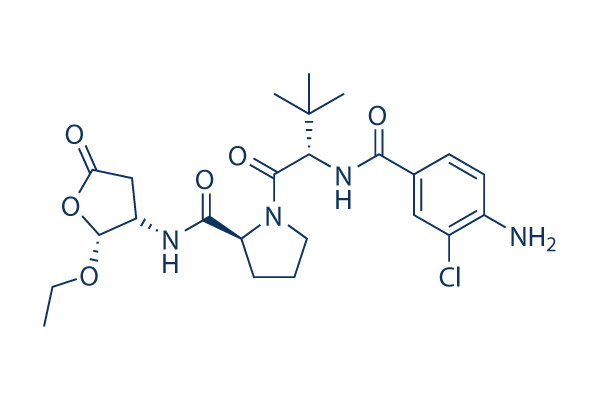Previously, most B CA proteins are recognized in protein databases as unknown proteins or putative CAs, devoid of a particular reference to B CAs. Based mostly about the current findings, new avenues is going to be opened to biochemically characterize B CAs and their inhibitors in arthropods, nematodes and protozoans. Methods Identification of putative B CA enzymes in protozoan and metazoan species and a number of kinase inhibitor pifithrin-�� sequence alignment Identification of novel B CAs was primarily based about the presence with the remarkably conserved amino acid sequence patterns on the active internet site, namely Cys Xaa Asp Xaa Arg and His Xaa Xaa Cys also marked in Extra file one Figure S1. Alignment was visualized in Jalview. In complete, 75 in vertebrate B CA sequences had been retrieved from Uniprot for alignment analysis, and one particular bacterial sequence was incorporated as an outgroup.
All protein sequences have been aligned using Clustal Omega. The sequences have been manually curated to clear away resi dues connected with an incorrect beginning methionine. selleck chemical A complete of 90 residues were removed through the N terminal end of Uniprot IDs D4NWE5ADIVA, G0QPN9ICHMG, D6WK56TRICA, I7LWM1TETTS and I7M0M0TETTS. The modified protein sequences have been then re aligned. This protein alignment then served because the template for codon alignment of corresponding nucleotide sequences employing the Pal2Nal program. Phylogenetic examination The phylogenetic examination was computed employing Mr. Bayes v3. 2. Just after 8 million generations working with the GTR codon substitution model, with all other parameters as default, the regular deviation of split frequencies was 1. 3910 3.
The last output tree was developed applying 50% majority rule consensus. FigTree v1. 4. 0 was utilised to visualize the phylogenetic tree plus the Pelosinus  fermentans sequence set as outgroup. Added trees were con structed for comparison making use of greatest likelihood, UPGMA, and neighbor joining approaches inside Geneious version seven. 0. 5 from Biomatters. Prediction of subcellular localization Subcellular localization prediction of each identified inver tebrate B CA was performed applying the TargetP webserver. TargetP is developed from two layers of neural networks, wherever the initial layer has a single focused network for each type of pre sequence, as well as second is surely an integrating net operate that outputs the actual prediction. It is actually ready to discriminate among cTPs, mTPs, and SPs with sensitivities and specificities increased than what has become obtained with other accessible subcellular localization predictors. Final results Various sequence alignment The Uniprot search of potential B CA sequences, as well as subsequent a number of sequence alignment, identified 75 B CAs in metazoan and protozoan species, of which 23 sequences had been reported as B CAs previously.
fermentans sequence set as outgroup. Added trees were con structed for comparison making use of greatest likelihood, UPGMA, and neighbor joining approaches inside Geneious version seven. 0. 5 from Biomatters. Prediction of subcellular localization Subcellular localization prediction of each identified inver tebrate B CA was performed applying the TargetP webserver. TargetP is developed from two layers of neural networks, wherever the initial layer has a single focused network for each type of pre sequence, as well as second is surely an integrating net operate that outputs the actual prediction. It is actually ready to discriminate among cTPs, mTPs, and SPs with sensitivities and specificities increased than what has become obtained with other accessible subcellular localization predictors. Final results Various sequence alignment The Uniprot search of potential B CA sequences, as well as subsequent a number of sequence alignment, identified 75 B CAs in metazoan and protozoan species, of which 23 sequences had been reported as B CAs previously.
GFAP Signal
GFAP is encoded by the GFAP gene
